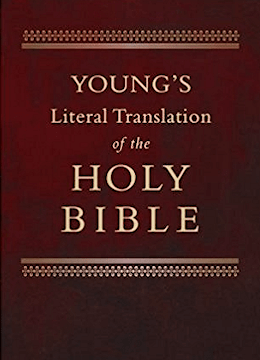Textus Receptus Bibles
Young's Literal Translation 1862
| 2:1 | Why have nations tumultuously assembled? And do peoples meditate vanity? |
| 2:2 | Station themselves do kings of the earth, And princes have been united together, Against Jehovah, and against His Messiah: |
| 2:3 | `Let us draw off Their cords, And cast from us Their thick bands.' |
| 2:4 | He who is sitting in the heavens doth laugh, The Lord doth mock at them. |
| 2:5 | Then doth He speak unto them in His anger, And in His wrath He doth trouble them: |
| 2:6 | `And I -- I have anointed My King, Upon Zion -- My holy hill.' |
| 2:7 | I declare concerning a statute: Jehovah said unto me, `My Son Thou `art', I to-day have brought thee forth. |
| 2:8 | Ask of Me and I give nations -- thy inheritance, And thy possession -- the ends of earth. |
| 2:9 | Thou dost rule them with a sceptre of iron, As a vessel of a potter Thou dost crush them.' |
| 2:10 | And now, O kings, act wisely, Be instructed, O judges of earth, |
| 2:11 | Serve ye Jehovah with fear, And rejoice with trembling. |
| 2:12 | Kiss the Chosen One, lest He be angry, And ye lose the way, When His anger burneth but a little, O the happiness of all trusting in Him! |

Young's Literal Translation 1862
Young's Literal Translation is a translation of the Bible into English, published in 1862. The translation was made by Robert Young, compiler of Young's Analytical Concordance to the Bible and Concise Critical Comments on the New Testament. Young used the Textus Receptus and the Majority Text as the basis for his translation. He wrote in the preface to the first edition, "It has been no part of the Translator's plan to attempt to form a New Hebrew or Greek Text--he has therefore somewhat rigidly adhered to the received ones."